
DERRY TOWNSHIP, Pa. — Here in Hershey, the once-sleepy south-central Pennsylvania town built on chocolate, drivers must now navigate a recently constructed roundabout on the “West End,” an ongoing and massive mixed-use development project. It’s essentially a new suburb, built from scratch, designed to attract and accommodate local population growth. But this controversial project — new roads paved over a beloved field traversed by herds of deer — isn’t fueled by Hershey’s global snacking company, the giant nearby amusement park of the same name, or the hospitality industry. Instead, it’s radiating out of Penn State Health, the hilltop headquarters overlooking the town created by a risk-taking confectioner more than a century ago.
Penn State Health’s intensifying presence reflects how the local health care sector, not just chocolate, is driving new construction and a population boom in this region, where the Susquehanna River divides Harrisburg’s West Shore from its East Shore, which includes Hershey (formally known as Derry Township). Past the West End’s excavated land stands Penn State Health’s Hershey Medical Center and College of Medicine, a crescent-shaped mid-century structure buttressed by decades of glass-ensconced additions. A community anchor since 1970, the “med center,” as locals call it, is Dauphin County’s top private employer — and continues to expand. Today, Penn State Health serves 29 Pennsylvania counties and employs close to 17,000 (12,000 at the med center and its children’s hospital alone); its College of Medicine enrolls more than 1,700 students in its graduate programs. In response to the health system’s steady expansion, the West End’s proposed medical offices and housing, including condos and apartments, will serve the adjacent campus’s staff and student enrollment. Meantime, in the village, new out-of-scale, farmhouse-style homes are replacing Hershey’s historic residences and postwar ranches.
With all this growth comes changed demographics — and shifting political dynamics. In a battleground state where candidates prevail with razor-thin winning margins, the changing voter composition of small and mid-sized suburban communities like Derry Township will shape the outcome of future Pennsylvania elections — including next year’s presidential race.
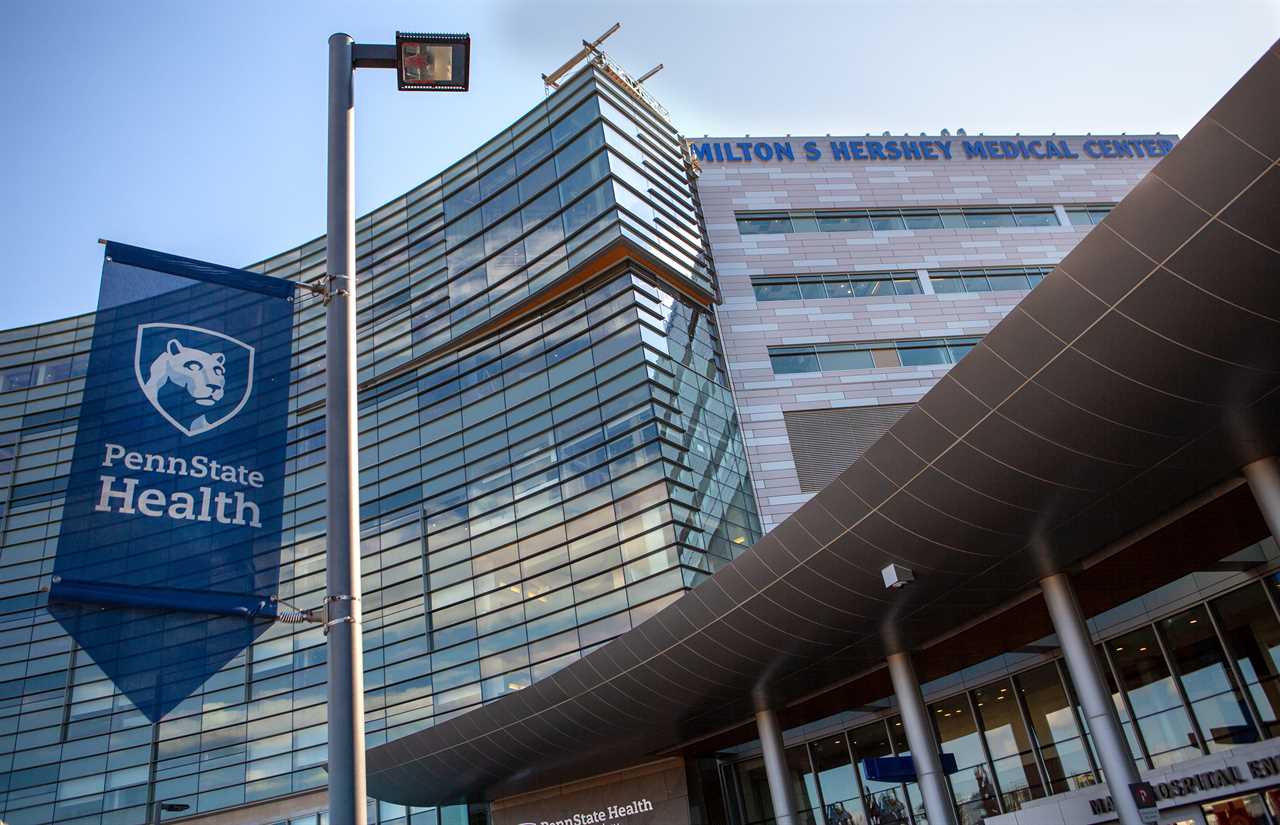
From the beginning, Derry Township was a GOP stronghold (founder Milton Hershey was a staunch Republican), home to descendants of the chocolate factory’s Italian immigrant laborers and Pennsylvania Dutch farmers who settled in the rural, blue-collar and conservative hamlet. It was a “one-party town,” said lifelong resident and local historian Lou Paioletti, a Democrat and Derry Township’s elected tax collector. “Way back in the early days, there was an unwritten expectation that the chocolate company workers be registered Republican.” This GOP mood prevailed through the turn of this century. Republican presidential candidates, including Donald Trump in 2016, regularly won the township — the beneficiary of a massive Republican voter registration advantage.

By the early 2010s, though, the med center was making Derry Township suburban and transient — and more Democratic. After the 2012 election, The Sun, the Hershey area weekly newspaper, reported local Republicans’ “disappointment” with voter returns that was “bound to set off a round of soul searching — and bloodletting.” During Trump’s presidency, Democratic voter registration dramatically increased; in 2020, Joe Biden prevailed here.
Today, the municipality (population 25,000) has never been bluer. “The biggest factor contributing to the change in voter registration, shifting from that ‘one-party town,’ in my opinion is the med center and the College of Medicine,” said Paioletti. “The medical community is extremely diverse, and we know how much the med center and college have grown.”
Between 2010 and 2022, as Penn State Health expanded, Derry Township’s Democratic voter registration increased more than 19 percent and is now nearly even with Republicans. David Feidt, Dauphin County’s Republican Party chair and a Derry Township resident, is witnessing the shift. He pointed to his own residential neighborhood, where med center workers proliferate, tucked in the wooded hills behind the hospital. “At one time, I could get petition signatures at one out of every three households. That’s not the case anymore,” said Feidt. “I think it’s part of the equation occurring throughout the Midstate. It’s a real phenomenon. The growth of the health care employees in the area is affecting the outcome of Election Day. You can see the shifts in the numbers.”
Hershey is a health care-fueled microcosm of a political trend occurring in Pennsylvania’s suburbs and across the nation: Physicians are now increasingly a reliable Democratic constituency. It’s part of a broader national voting shift toward Democrats among professionals in the health care, pharmaceutical and life sciences realm.
For physicians, their leftward turn is a reversal from decades past, when doctors commonly identified as Republican. At the time, their GOP preference was a business concern: They owned small practices. They had yet to enter the era of employment in large medical systems. “Most doctors are Republicans,” as one Florida physician New York Times","_id":"0000018a-7173-dd5e-abfe-fbf35a430000","_type":"02ec1f82-5e56-3b8c-af6e-6fc7c8772266"}">observed to the New York Times in 1996. “Most doctors’ dads were Republicans. They do not see themselves as proletarian. They see themselves as bourgeois.”
Over time, though, the profession became more politically divided. This division paralleled cultural and economic shifts: more diversity among students at medical schools, where social concerns were incorporated into curricula, and then eventual employment among these graduates at corporate or nonprofit medical systems instead of privately owned practices. The leftward shift was gradual but then suddenly intensified by the Covid pandemic, when a large share of doctors perceived GOP politicians as displaying an antipathy toward science.
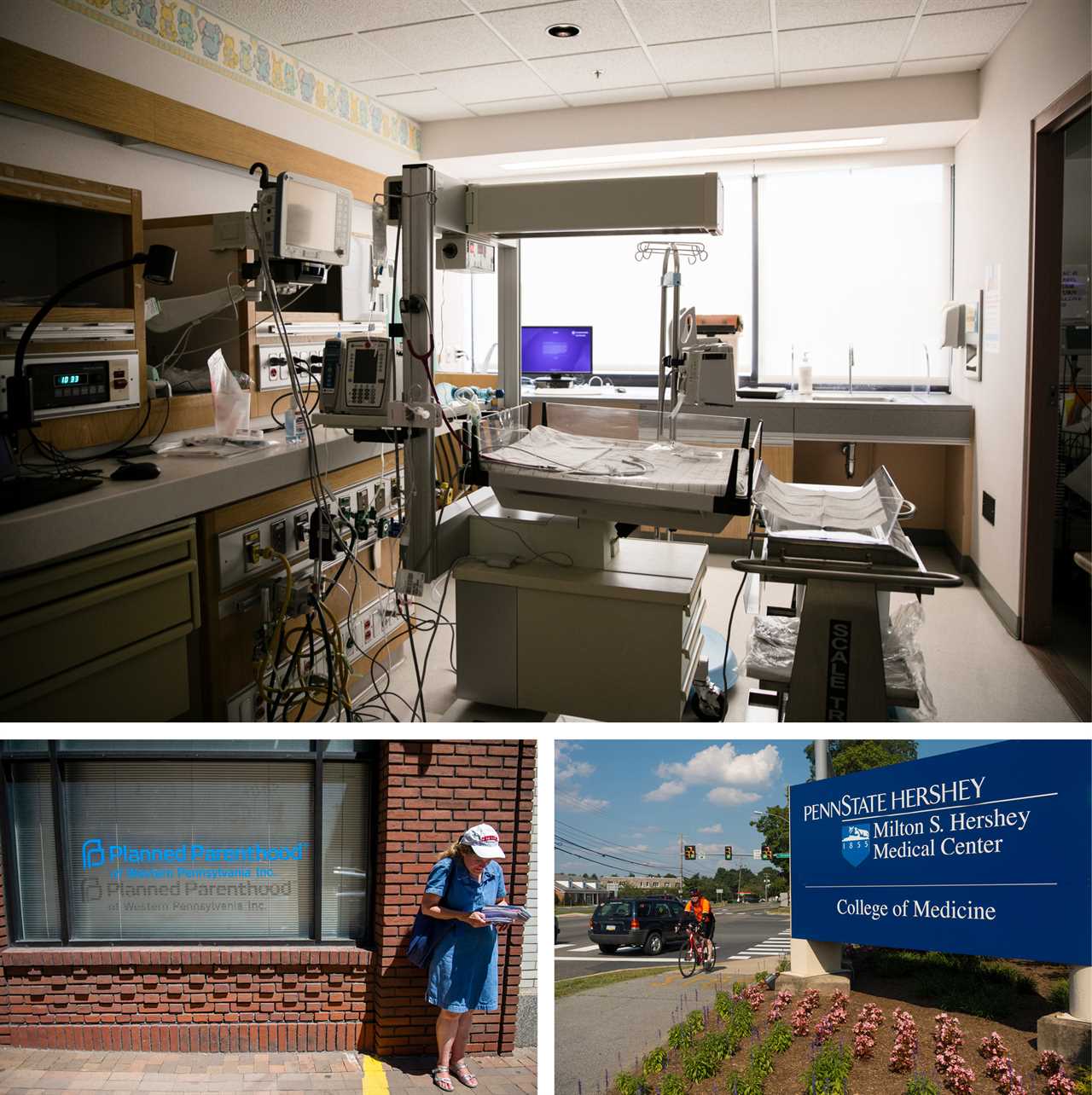
Statistics track the evolution of the political shift. Between 1996 and 2012, a Journal of the American Medical Association study","_id":"0000018a-7174-d816-a5ba-f97f9e130000","_type":"02ec1f82-5e56-3b8c-af6e-6fc7c8772266"}">Journal of the American Medical Association study found, the percentage of physicians contributing to Republican candidates had decreased. Meanwhile, in 2016, Yale researchers found that political leanings were divided by medical specialties (psychiatrists were typically Democrat, for example, while urologists trended Republican). By that year, Republican doctors were outnumbered by their Democratic colleagues.
As Gallup found at the time, 35 percent of doctors considered themselves Democrats, compared to 27 percent who were Republicans. And according to an analysis from the Center for Responsive Politics (CRP), in 2000, 63 percent of physicians’ federal campaign contributions went to Republicans. By 2022, the percentage level flipped in Democrats’ favor.
In Pennsylvania, the health care realignment — not just suburban disdain for Trump — is critical to understanding the political demography of the Harrisburg area, but also Lancaster County, the Lehigh Valley, suburban Philadelphia and Allegheny County, where the anchored University of Pittsburgh Medical Center is the state’s largest nongovernmental employer. According to CRP data, nearly 67 percent of Pennsylvania physicians’ campaign contributions to federal candidates went to Democrats in 2022 (compared to 61 percent to Republicans in 2012).
“The politics of the suburbs have been shifting for more than a decade. And no sector shows this trend more than health care and the life sciences,” said Guy Ciarrocchi, a Commonwealth Foundation senior fellow who in 2022 ran as a Republican in Pennsylvania’s 6th congressional district. The district — represented by Democratic Rep. Chrissy Houlahan since 2018 — includes Wyomissing, an upscale Reading suburb where Philadelphia’s Drexel University opened a regional medical school in 2021. It’s another longtime Republican borough that’s going Democratic.
Most of the district, though, includes suburban Philadelphia’s Chester County, once stalwart GOP territory, where many voters now work in the life sciences industry. Life Sciences Pennsylvania, the statewide trade association for life sciences employers, is headquartered there. “A good percentage of senior executives are Democrats, but they’re Democrats for social issues, certainly not for economic issues, and they’re able to compartmentalize the social issues from their business concerns,” said Christopher Molineaux, president of Life Sciences Pennsylvania.
Between 2015 and 2020, the number of the state’s life sciences establishments, such as biotech firms, pharmaceutical companies and research entities, grew by nearly 17 percent. During that period, employment in the industry increased by 20 percent in Pennsylvania, which is a national leader in research and development.
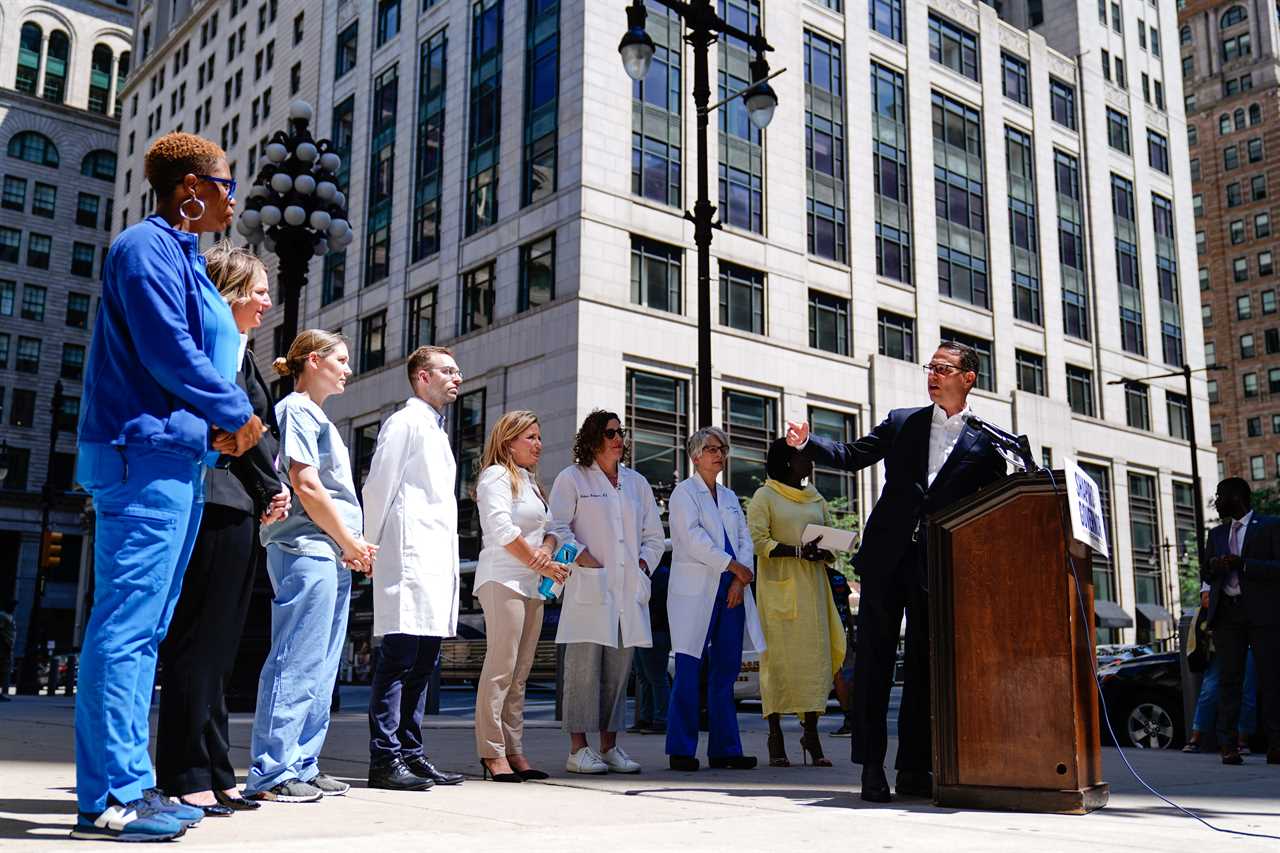
The life sciences industry is also a major presence in suburban Philadelphia’s Montgomery County, where Cencora (rebranded from AmerisourceBergen last week) — the leading company by revenue in Pennsylvania — is headquartered. Today, Montgomery is Pennsylvania’s most reliably Democratic suburban county. It’s a dramatic reversal from three decades ago, when in 1990, for example, the late Democratic Gov. Bob Casey Sr. carried every county in the state in his reelection campaign except then-historically Republican Montgomery. In the ’90s, as Molineaux recounted, Democrats “used to have the anti-pharma talking points.” Today in Montgomery, though, pharmaceutical executives live in a county that produces influential Democrats, most notably Gov. Josh Shapiro, who ascended the political ladder as a state representative and county commissioner. (Shapiro’s state Human Services Secretary Val Arkoosh is an anesthesiologist and former Montgomery County commissioner; the state’s Democratic House Majority Leader Matt Bradford also hails from the county.) “You have Shapiro, who comes from Montgomery, with a heavy concentration of life sciences, who … has a strong innovation economy platform, and that’s giving a lot of people permission to support the life sciences regardless of the side you’re on,” said Molineaux.
As Ciarrocchi views it, the politics of the Covid era both accelerated the shift to the Democratic Party and may have hardened many voters in place in areas like suburban Philadelphia. “In the debates over vaccines, mandates and lockdowns, Republicans, through their words and actions, were seen to oppose or not ‘trust the science,’” said Ciarrocchi. “Regardless of the merits of those debates, many in health care and life sciences took those criticisms personally. What was beginning as a trend a decade ago has accelerated over the past three years.”
Republicans now face an uphill battle against a cultural and economic shift that is working in Democrats’ favor. In the 1990s and 2000s, when physicians tended to be Republican, they oftentimes worked in small and private practices. They had GOP-aligned business interests, such as taxes and regulations, and legal concerns, like medical malpractice rates, that clashed with Democratic donor groups like trial attorneys.
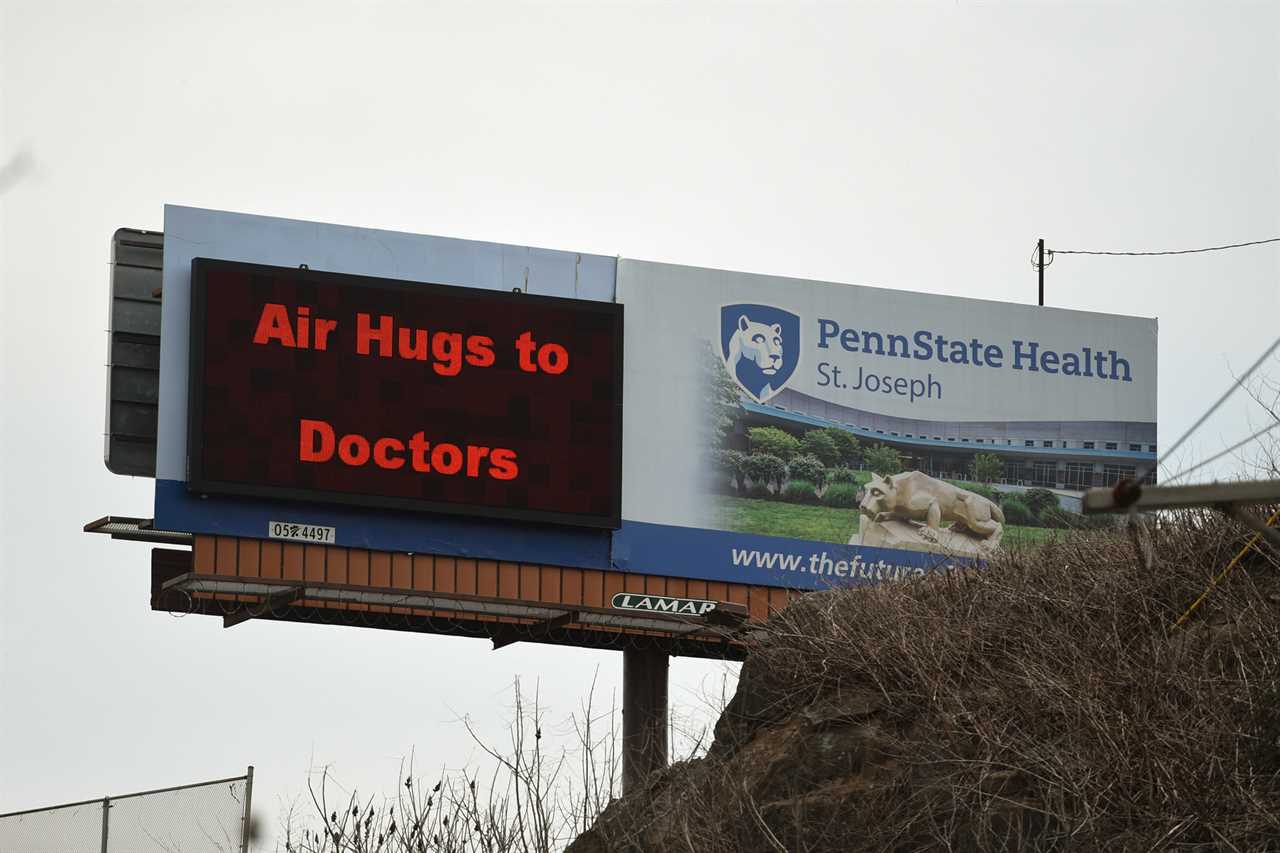
At the time, “the health care industry largely aligned itself with the Republican Party,” noted Chris Borick, director of Muhlenberg College’s Institute of Public Opinion in Allentown, who teaches a course on health policy. “It saw the threats of HillaryCare and Democratic intervention in the field. That changed a lot during the passage of the Affordable Care Act, when Obama recognized quickly the failings of HillaryCare and brought the health industry inside for the development of Obamacare.”
By the Trump era, physicians were typically employed in massive, nonprofit health care systems, such as Penn State or UPMC, which expanded eastward and became a major presence in south-central Pennsylvania. According to an analysis by the American Medical Association, for the first time in 2020, the majority of physicians worked outside private practices. That’s compared to 60 percent of physicians who worked in private practices in 2012 — in the 1980s, this percentage share was as high as 70 to 80 percent. As employees in today’s large medical systems, physicians are no longer consumed with the day-to-day concerns of running a small business.
Working in systems instead of operating as private owners spares physicians some administrative burdens and the direct overhead expense of medical malpractice insurance premiums. And the shift isn’t going away either. As an American College of Surgeons analysis last year noted, “Recent residency graduates increasingly opt for the perceived predictability of employment rather than seeking the entrepreneurial rewards of small business practice.”

The burgeoning systems play a role in the changing politics of locales like Hershey. Stewart McCarver, a Hershey physician running this November as a Democrat in the local school board race, observed that “medicine is a little bit more blue-collar than it used to be. It used to be that doctors were sort of entrepreneurs [who] had their own businesses.” He added: “So we are well-paid, blue-collar workers, but we are more cogs in the machine and cogs in the machine prefer Democrats.”
As high-earning employees of systems, physicians have increasingly turned to social concerns in medicine. The ideological dynamics and curricular dimensions of today’s medical schools, moreover, contribute to and complement physicians’ increasingly progressive viewpoints. Sally Satel, a psychiatrist and resident scholar at the center-right American Enterprise Institute, has extensively studied the leftward shift in medicine, including in medical schools.
“Academic medicine is in the midst of a risky institutional experiment,” Satel wrote in Quillette in 2021, citing how institutions like the Association of American Medical Colleges, which accredits medical schools, have increasingly focused on social justice advocacy. “It’s changing medical education, warping it, really, by putting an emphasis on forms of activism that are not going to improve patient care,” said Satel.
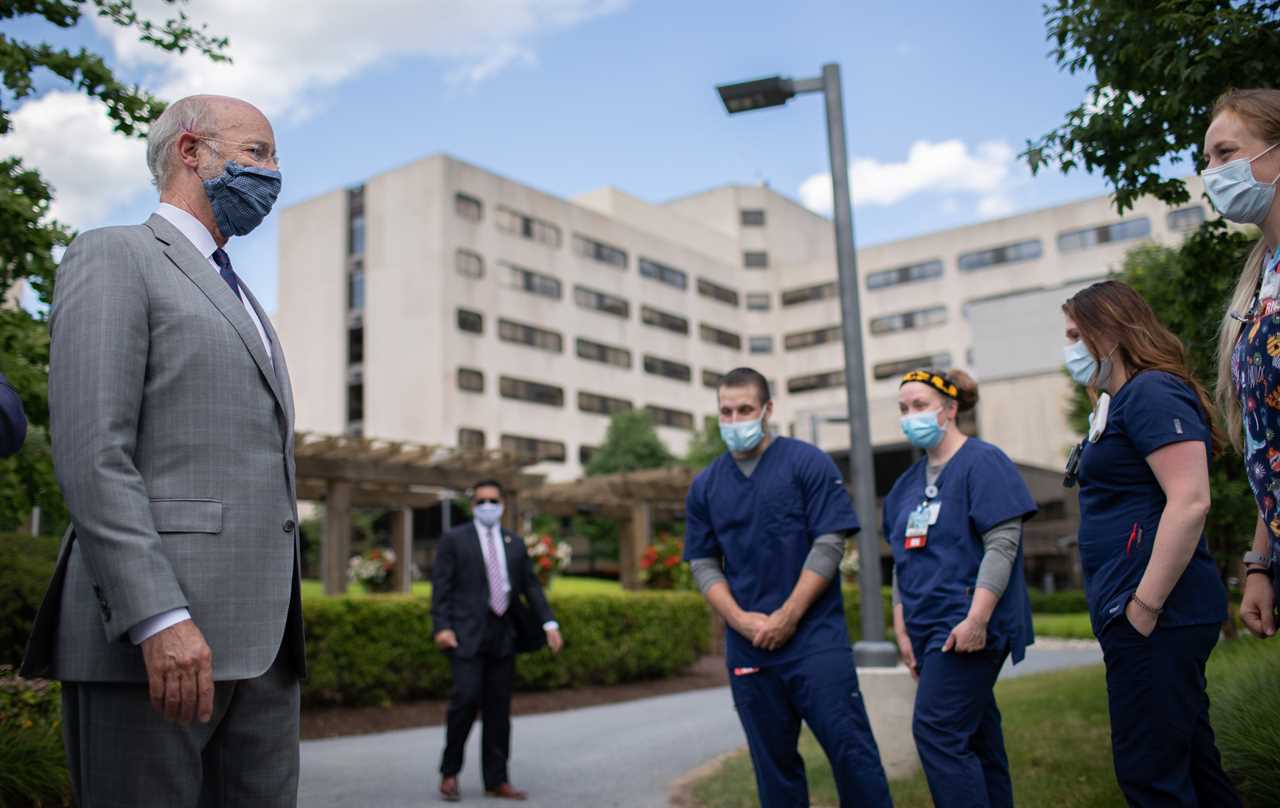
Younger physicians were trending liberal before the Covid-19 pandemic and the post-George Floyd era. According to a 2019 study, co-authored by Stanford University political scientist Adam Bonica, the “more recent graduates of medical schools tend to make campaign contributions to Democrats; that is, younger physicians are much more likely to be Democrats than older ones.” Among the study’s examples of this trend were women practicing in lower-paying specialties, such as pediatrics, who were more likely to donate to Democratic candidates.
“The liberal activism of recent medical school graduates, both as campaign contributors and as petition signers, suggests that political advocacy by physicians could occupy a still more significant space within medicine,” the study added. “They may also become educators and models for future physicians.” In a separate 2020 analysis for the Journal of Health Politics, Policy, and Law, a group of academics, including Bonica, concluded that, “Younger physicians have trended sharply to the left.” Many of today’s increasingly diverse younger doctors, for example, embrace the profession to pursue advocacy. As one Penn State medical student, who initially had an interest in a public policy career, told PennLive, “Over time, it all came together as I continued to shape my vision for medicine. I didn’t realize I am still wanting to serve, advocate, and empower people but it’s just in a different capacity.” She referenced “racial justice, protests, national pressure, and an awareness of these disparities that have been amplified by COVID and wanting to respond by increasing diversity in the medical field.”
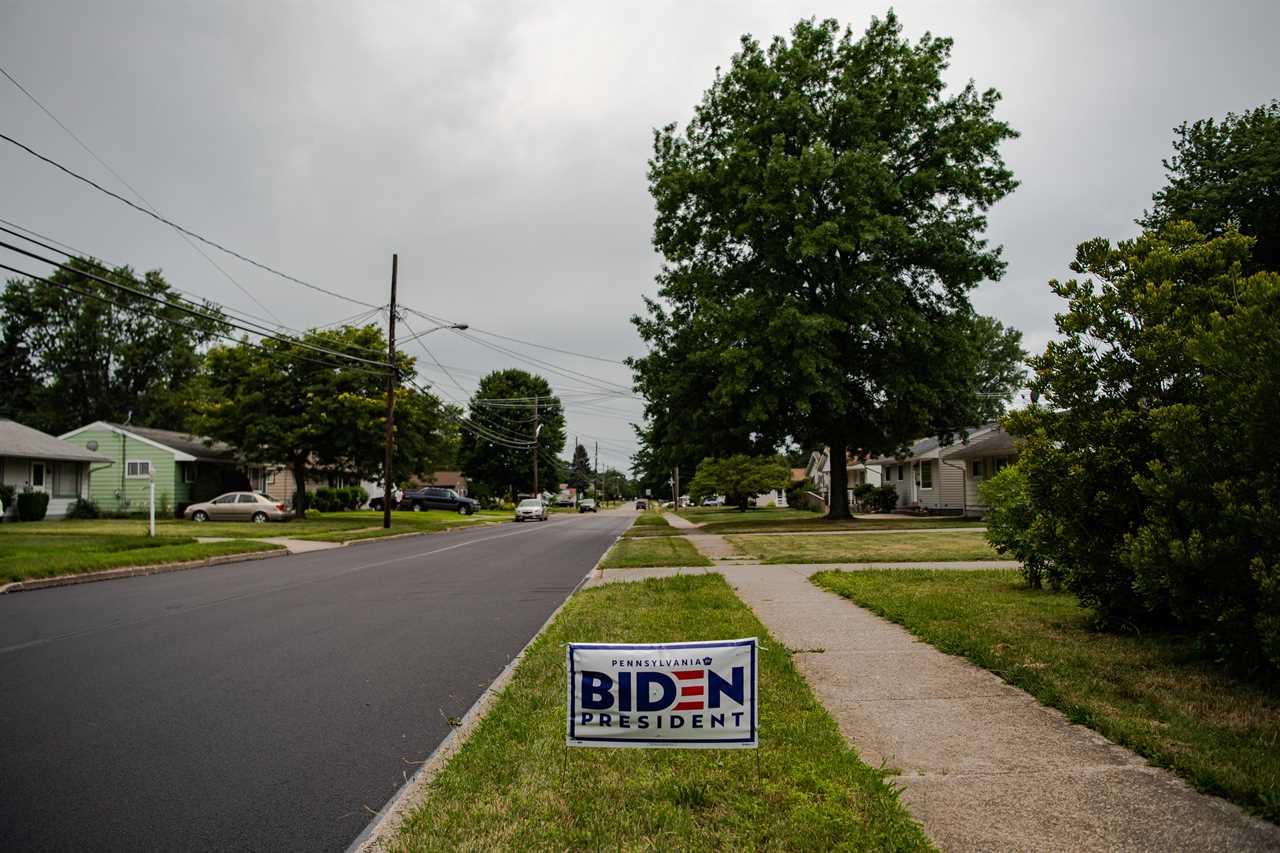
That progressive shift has occurred as voter turnout has increased over the past two decades among America’s physicians, historically a group that votes at a lower rate than the general population. According to a 2021 study, when comparing physicians to the public, they were more likely to vote by mail or before Election Day. By 2020, when no-excuse mail voting was first employed in Pennsylvania, physicians and hospital systems, such as Penn Medicine, were involved in voter outreach.
In the 2022 cycle — amid a suburban backlash following the Supreme Court’s Dobbs decision on abortion — physicians mobilized against Republican U.S. Senate candidate Mehmet Oz, who already faced electoral headwinds as a celebrity doctor with tenuous ties to Pennsylvania. In the general election, Oz sought to clarify his position on abortion, asserting that he would not support criminal penalties for those who have abortions or the physicians providing the care, and distanced himself from state Sen. Doug Mastriano, the Republican gubernatorial candidate last year who supported a total abortion ban.
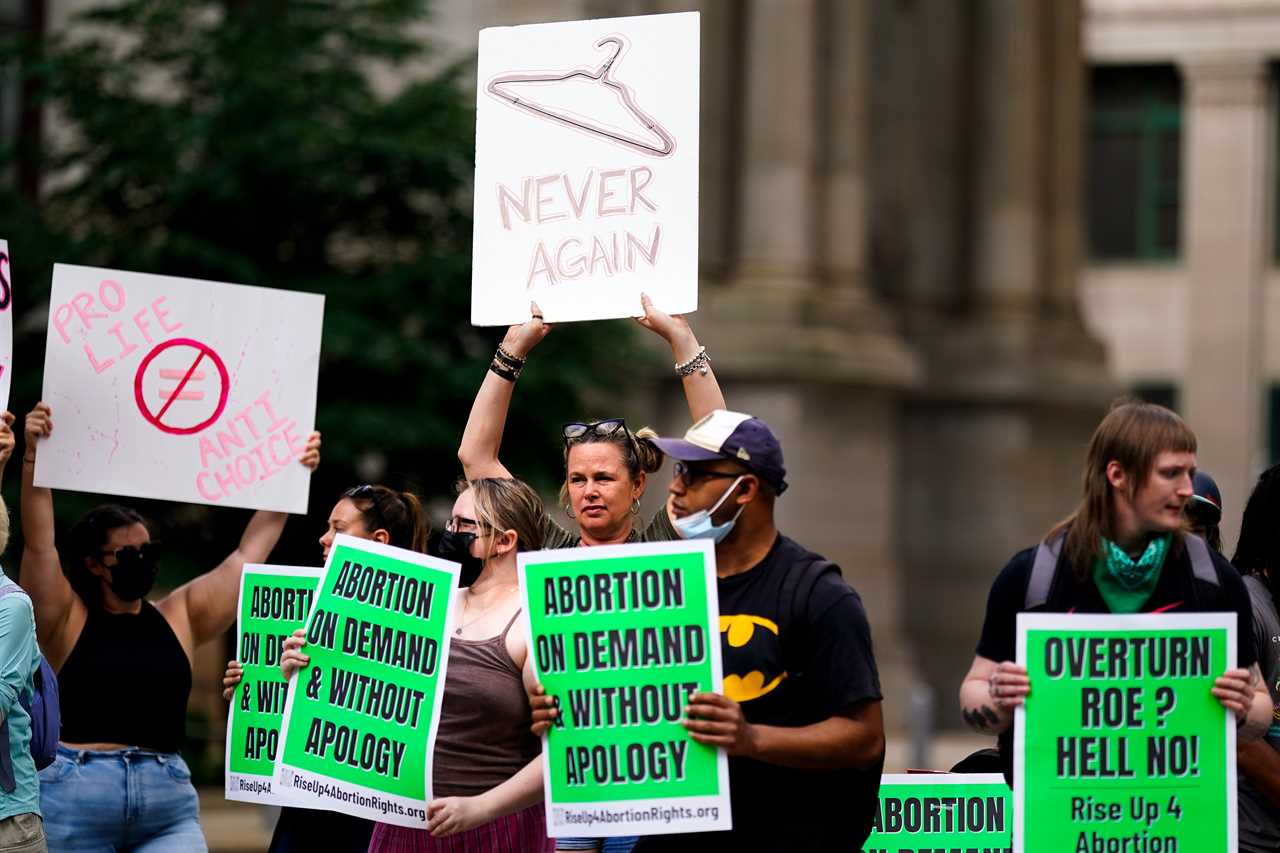
The Pennsylvania Medical Society, a member organization representing the state’s physicians and medical students, released a statement targeting lawmakers on “the potential criminalization of physicians,” while physician advocacy groups were active on the campaign trail. “This is the first time I’ve really seen the doctor community really activate like this,” a suburban Philadelphia pediatric psychiatrist told POLITICO last year. “Doctors are usually very careful in their public life, but there’s none of that feeling right now. We’re out there saying what we believe.”
In Hershey, as Tom Brier learned during his Democratic primary congressional run in 2019, physicians and medical students were becoming involved in political advocacy before the pandemic and Dobbs. Before his campaign, he had noticed how Hillary Clinton prevailed among highly educated voters against Trump in the 2016 presidential election. An attorney, Brier viewed the red-trending 10th congressional district, which includes Penn State’s College of Medicine, among several other higher education institutions, as competitive territory for Democrats (the area has been represented by Republican Rep. Scott Perry since 2013). Before his run, Brier, noting Republican doctors in his own family, had assumed that physicians trended conservative. But in the Harrisburg-Hershey area, “I was surprised by the scale of support from doctors and nurses in the medical field.”
Brier encountered physicians who were first-time donors and volunteers. At his town halls, he met doctors but also medical students, who wrote blog posts on health care-related issues for the campaign. “I tried to get their perspective,” said Brier, recounting how on the trail he “heard a ton of discussion about access to primary care” as well as the need for a “communal approach” to health care.

Patty Kim, a Democratic state representative in Harrisburg, noted issues like abortion and gun violence as additional motivating factors behind physicians’ Democratic turn. “I’ve spoken to ER doctors, and they know that this [gun violence] is a major problem in our area,” said Kim, whose district includes parts of the West Shore.
Harrisburg’s bridges connect the city’s East Shore — where law firms and trade associations occupy stunning mansions along Front Street — to the West Shore, comprised of bedroom communities historically resided by state workers, lawyers and lobbyists. The West Shore is in Cumberland County, the fastest-growing county in Pennsylvania (it added 8,300 people just between 2020 and 2022). Similar to communities like Hershey in neighboring Dauphin County, which has held a Democratic voter-registration majority since 2008, Cumberland is a long-time GOP county that’s increasingly being targeted by Democrats. Cumberland’s West Shore also exemplifies what David La Torre, a Harrisburg-based communications strategist, described as the “hospital arms race across Pennsylvania.”
For decades, as suburban sprawl expanded westward from Harrisburg, Cumberland’s riverside locales were served by Holy Spirit hospital, which was acquired by Penn State Health in 2020. A year later, Penn State opened another nearby West Shore hospital, just across Interstate 81 from a hospital acquired by UPMC in 2017. Meantime, York-based WellSpan plans on building community hospitals in Cumberland County, which is also home to Select Medical, which operates hospitals and clinics in 46 states. At one time, the West Shore was comprised of “independent doctor offices and Holy Spirit hospital,” said La Torre, who served as press secretary to former Republican Gov. Mark Schweiker. “But now all these jobs have been created and the area went from one hospital to four. The health care employment population has literally exploded, and these employees typically trend blue.”

La Torre has witnessed the political transformation firsthand as a resident of Camp Hill, a charming borough just across the Susquehanna from the state Capitol. “No borough was more staunchly Republican in the past 50 years than Camp Hill,” said La Torre, who in 2021 ran as a Republican in a local school board race. Today, though, Democrats hold a voter-registration majority in Camp Hill. “The entire Camp Hill borough council is comprised of Democrats. You can’t even find Republican to do write-ins,” said La Torre. “Democratic operatives have been moving into communities and organizing ... and winning races.”
In neighboring Lower Allen Township, Dean Villone, president of the municipality’s board of commissioners, has observed a similar political evolution in Arcona, a large and newer mixed-use development, similar to the plans for Hershey’s West End. When Villone, a Republican, first ran in 2017, “I knocked around some of those doors, and I was shocked by how few Republican voters there were in Arcona.” He added, “As Arcona has built itself out. … It’s clear there’s a shift there.”
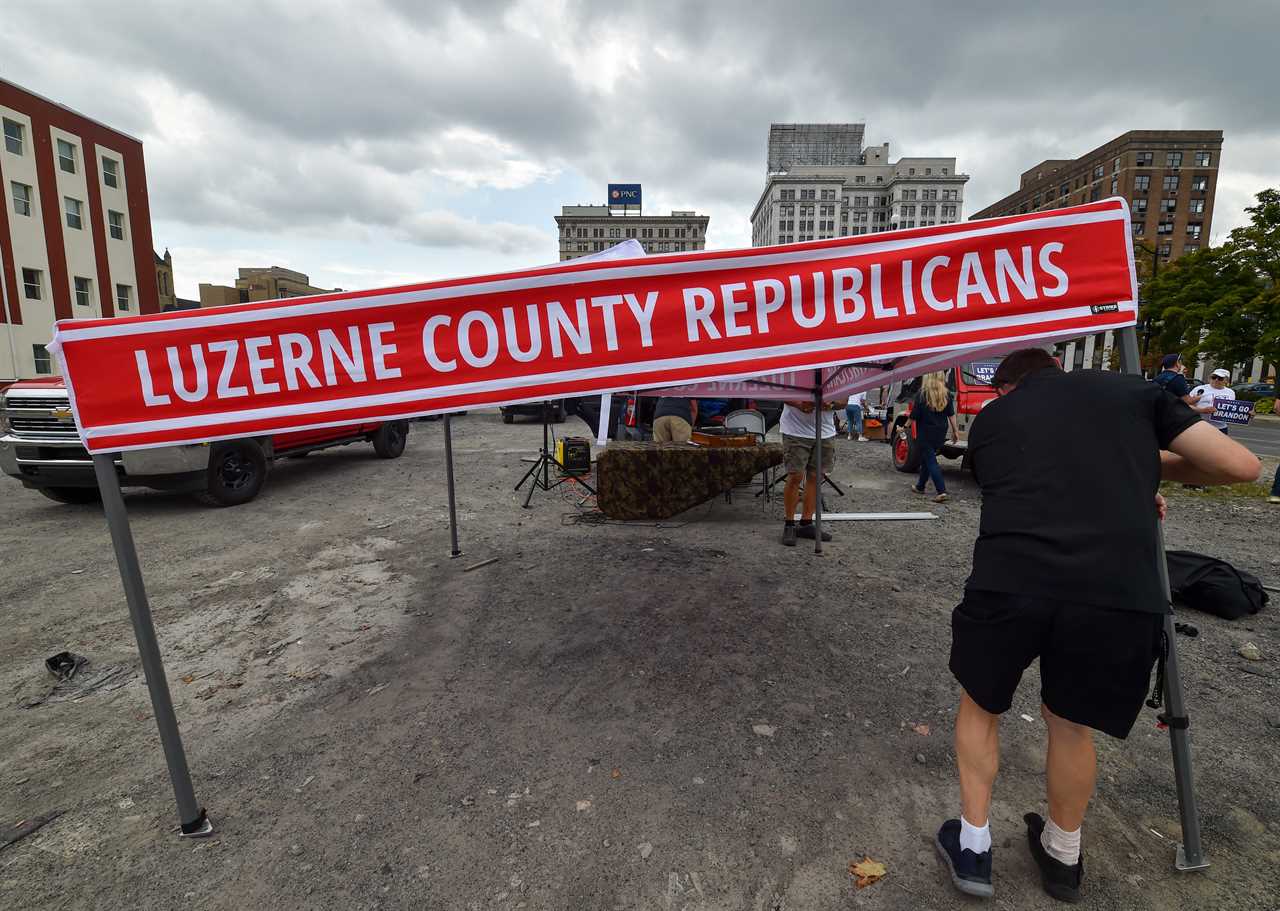
Next year, when Pennsylvania will repeat its crucial role in the presidential election — in addition to hosting a pivotal U.S. Senate race — the health care suburbs of Harrisburg’s East and West Shore will factor into the final outcome. In a state where winning margins are perennially narrow, suburban communities like Hershey, which shifted from Trump to Biden in 2020, are essential for Republicans to improve their performance. While the suburbs around Philadelphia and Pittsburgh are assuredly blue, the sprawling communities that span the Cumberland and Lebanon Valleys still mostly trend Republican. When considering south-central Pennsylvania, Villone believes “the conservative nature … will still hold.” Even so, amid population growth in Cumberland and even mostly rural Lebanon County — now the state’s second-fastest growing county, just 30 minutes east of Harrisburg — the political composition of the region will become more competitive for Democrats.
Overall, Pennsylvania’s political realignment is nearing completion. Northeastern Pennsylvania’s Luzerne County — once a center of pro-labor Democrats — is on rapid pace to holding a GOP voter-registration majority in a region now shaped by a warehousing and logistics explosion. The same political demographic shift applies in western Pennsylvania counties, where Walmart and the state or local government are among top employers. Meanwhile, Democrats turn to Allegheny County, a Pittsburgh-fueled blue core in the west, and Philadelphia and its suburban “collar” counties. In the coming years, growing areas like Harrisburg’s West Shore will make suburban counties like Cumberland increasingly pivotal for candidates in both political parties to prevail in statewide elections. As new hospitals open in this region and across Pennsylvania suburbs, Republicans confront the reality that physicians are now typically Democrats working in health care systems.
“People in the health care industry don’t see the Democratic Party as it once did as an opponent to the industry but more often as a partner,” said Borick, Muhlenberg’s pollster.
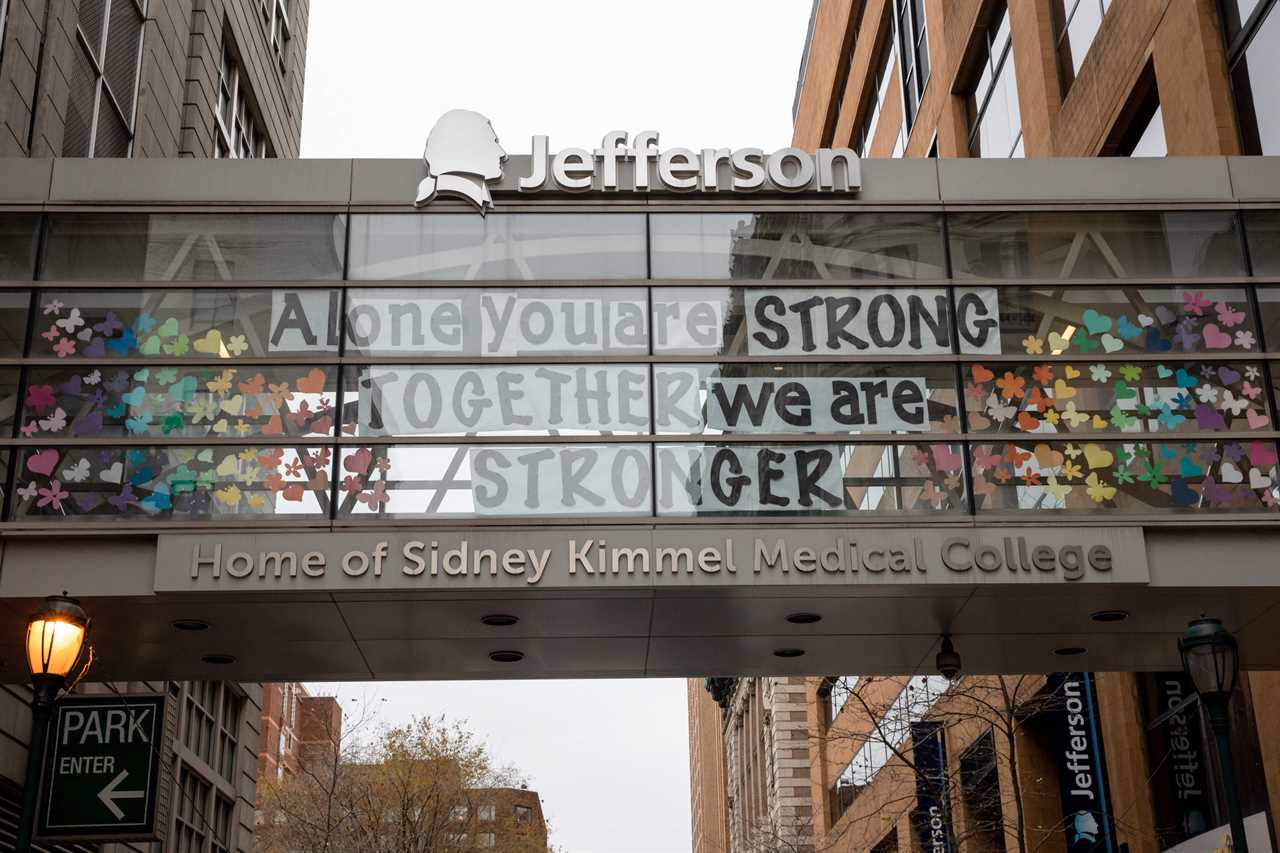
Ciarrocchi, who writes regularly on suburban political trends, put it this way: “The question going forward is: Can the Republicans’ pro-growth, pro-free market message win back the executives, researchers and boardrooms of the health care industry?”
For now, the answer can be found on Hershey’s leafy Elm Avenue, where yard signs for Democratic candidates commonly line the front lawns of stately homes — a few designed by Milton Hershey’s architect — just a short stroll from the medical center.
----------------------------------------
By: Charles F. McElwee
Title: How the Health Care Industrial Complex Could Torpedo Trump’s Chances in Pennsylvania
Sourced From: www.politico.com/news/magazine/2023/09/08/pennsylvania-medical-establishment-gop-00114316
Published Date: Fri, 08 Sep 2023 04:00:00 EST
Did you miss our previous article...
https://consumernewsnetwork.com/politics-us/the-presidents-text






